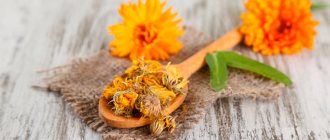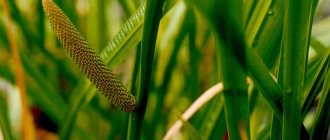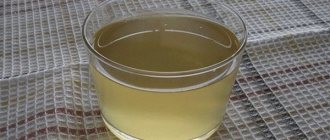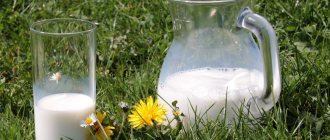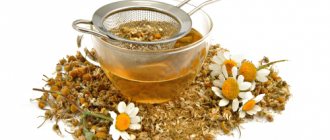Photo pixabay.com
My grandmother treated the same diseases with different herbs. She advised one person to drink one herb, another another. Grandma rarely made a mistake with her choice of herbs. Doing this on your own is much more difficult. But there are many plants that treat a huge number of diseases, and in treatment they have a great positive effect.
Among them is yarrow. This plant has many healing properties that cannot be listed so easily. Thanks to the content of resins and silicon, it restores tissue after operations, burns, and wounds. It is used as a hemostatic agent for internal and external bleeding, diseases of the gastrointestinal tract, for inflammatory processes in the uterus, and also as a diaphoretic, choleretic, diuretic, antiseptic and appetite improver. It was for the ability of the plant to treat a huge number of diseases that my grandmother called yarrow a thousand lives.
Photo pixabay.com
Metrorrhagia
Metrorrhagia is uterine bleeding that is not associated with the menstrual cycle.
Occurs with uterine cancer, uterine fibroids and other diseases. An infusion is prepared for treatment. Two tablespoons of dry crushed yarrow herb are poured into one liter of boiling water, left for three hours and filtered. Take one tablespoon of infusion three times a day until improvement. When treating uterine bleeding with yarrow, women need to be very careful, otherwise after treatment the menstrual cycle will take a long time to recover, or rather, it simply will not exist.
Yarrow contraindications
The medicinal forms of the plant partly have a slight toxic effect, so it is necessary to take its preparations orally with caution. Herbalists strongly recommend not to exceed the dosage and duration of treatment.
Yarrow is contraindicated:
- children under 6 years old;
- pregnant women;
- people with individual intolerance to plant components;
- patients with low blood pressure.
Despite the lack of objective data, yarrow preparations are prescribed with caution for thrombophlebitis and increased secretion of the gastric glands. An overdose of yarrow preparations can result in dizziness and skin rashes. In such cases, therapy should be stopped.
Inflammation of the pancreas
Yarrow decoction is used for pancreatitis due to its antispasmodic effect. It reduces pain and promotes better outflow of digestive juices from the gland. It can be used only in the chronic form of the disease, when the production of enzymes is reduced.
It is prohibited to treat acute pancreatitis with yarrow.
A person with chronic pancreatitis is prescribed tea with yarrow for regular use. You need to brew a pinch of herb with a glass of boiling water. Drink warm before bed.
Benefits and harms
What does yarrow treat and what is used for in gastroenterology? To understand this, let’s figure out what properties this herb has.
So, yarrow:
- relieves inflammatory processes;
- stops bleeding;
- has an astringent effect;
- has a bactericidal and antiseptic effect;
- improves digestion processes;
- increases appetite.
Now let’s take a closer look at how yarrow tea affects various organs of the gastrointestinal tract.
Use for the stomach and intestines
For diseases of the stomach and intestines, the carminative, analgesic, antiseptic and astringent effect of yarrow is used. Thanks to regular intake of teas or decoctions, damaged mucous membranes are restored, appetite improves, and stomach cramps are relieved. Moreover, intestinal motility is improved.
If you abuse yarrow decoctions or teas, heartburn may occur. To avoid harm to your own health, you should consult a doctor before treatment.
For gastritis
Yarrow decoctions are drunk for gastritis with normal or low acidity. If it is elevated, you should not take the medicine, it can cause heartburn.
Thanks to the use of this plant, it is possible to restore damaged walls of the gastric mucosa, improve digestion, and relieve pain and cramps. But if you abuse yarrow infusions or teas, you can cause attacks of nausea, dizziness, and headaches.
For pancreatitis
The use of yarrow for pancreatitis has a beneficial effect on the functioning of the pancreas. The plant stimulates its work, relieves pain and spasms.
However, you need to be careful when brewing tea for pancreatitis. If the dosage is exceeded, nausea or a body rash may occur.
For hemorrhoids
The use of yarrow for hemorrhoids is justified in case of bleeding or severe, excruciating pain.
To stop the bleeding, take an alcohol tincture orally. To relieve inflammation, use a herbal decoction or infusion.
Exceeding the dosage leads to abdominal pain, bloating, and nausea. Side effects can be avoided only if yarrow is used correctly for the treatment of hemorrhoids.
Herbs for gastritis with high acidity: how plants actually help
Gastroenterologists often recommend the use of herbs for gastritis with high acidity. Unlike medications, they do not put additional stress on the liver, have a very gentle effect directly on the area of the disease, and also have a positive effect on the entire body.
Indications for herbal treatment
Gastrointestinal diseases that can be treated with herbs that reduce acidity include acute and chronic forms of gastritis with high secretion.
Herbal medicine is prescribed:
- in order to eliminate hypersecretion of the stomach and the aggressiveness of the salt environment;
- to reduce pain and spasms;
- to prevent complications, such as peptic ulcers;
- in order to alleviate the patient’s condition and improve his quality of life;
- to speed up the regeneration of damaged areas of the mucosa.
Pharmacy gastric fees
In pharmacology, medicinal herbs for mixtures are selected in adjusted proportions in order to quickly eliminate inflammation of the mucous membrane and stop the development and appearance of new defects. Gastric preparations normalize the production of the required volume of gastric juice. Compositions No. 1, 2 and 3 will help reduce acidity in gastritis.
Collection No. 1
If gastric mixture No. 1 is consumed regularly, then:
- burning and pain in the stomach area will disappear;
- heartburn and bloating will go away;
- damaged areas of the mucous membrane will be restored.
Collection No. 1 consists of:
- 4 teaspoons of medicinal chamomile flowers;
- 4 parts of ordinary yarrow;
- 3 parts of pharmaceutical calendula flowers;
- 2 teaspoons of crushed valerian officinalis root;
- 4 teaspoons peppermint;
- 2 parts bird knotweed;
- 3 tsp St. John's wort;
- 2 hours of marsh dried dried fruit.
The composition is also taken for erosive gastritis.
Gastric charges No. 2 and 3
For this disease, gastric preparations are also used:
- No. 2, which has an enveloping, antispasmodic and anti-inflammatory effect, and also improves liver function in pancreatitis thanks to the substances contained in flax seeds;
- No. 3, eliminating constipation, intestinal and biliary colic, and also improving the functioning of the gallbladder.
Gastric collection No. 3 improves the functioning of the gastrointestinal tract
Medicinal herbs, if used regularly and correctly, can replace medications during remission, and also become good assistants in complex therapy during exacerbations.
Herbal treatment
It is easy to reduce gastric secretion and the aggressiveness of the salt environment during inflammation of the stomach with the help of:
- yarrow;
- swamp cudweed;
- peppermint;
- calamus;
- St. John's wort;
- Centaury umbellata.
There are recipes for infusions that contain other plants.
Important! Not all herbs are suitable for treating gastritis with increased gastric secretion. Wormwood, for example, is absolutely contraindicated, as it enhances the production of digestive enzymes.
Marshmallow root
Marshmallow root lowers acid levels in gastritis. For medicinal purposes, an infusion is prepared from it.
To do this you need:
- 2.5 tbsp. l. pour 0.6 liters of boiling water over the dried root.
- Leave the composition for 8-10 hours.
- Strain through cheesecloth.
- Add 2.5 tbsp. l. liquid natural honey.
The product is consumed 2-4 times a day, 150 ml. Before use, you should consult a specialist.
Liquorice root
Licorice root is considered the most useful in the treatment of gastritis with high acid production.
The medicinal tincture is prepared as follows:
- 12 g of crushed root should be poured into 240 g of boiling water.
- Cool for 20-25 minutes.
- Cool the mixture and strain through cheesecloth.
- Squeeze out the remaining sediment.
- Add cold boiling water to the infusion to 200 ml.
Use 3 times/day, 30 g.
Chamomile
The healing properties of chamomile have been known for a long time. During gastritis, chamomile will relieve inflammation inside the stomach and reduce irritation of the mucous membrane.
Preparation:
- Pour 30 g of chopped chamomile into 240 g of water.
- Boil for 1.5 minutes.
Take 80 g of decoction before meals 2-4 times a day.
To prepare an infusion, the plant can be taken with other herbs:
- Mix equal parts chamomile and yarrow.
- Pour the composition with hot water.
- Leave in a thermos for 10-12 hours.
Take 125 g 3 times a day before meals.
Calendula
This plant will help cope with exacerbation of the disease. Calendula has a healing, bactericidal, anti-inflammatory and antispasmodic effect.
If you have discomfort in your mouth, you can gargle with the prepared infusion:
- Pour 17 g of dried calendula into 240 g of boiling water.
- Leave for an hour and a half.
- Strain.
For gastritis, use the composition 3-4 times a day. Brew fresh decoction daily. This remedy will help quickly restore a sore stomach.
Blooming Sally
The healing plant normalizes the gastrointestinal tract, improves the body's absorption of nutrients, and also has an anti-inflammatory and bactericidal effect.
To prepare a healing infusion, you need:
- Pour 30 g of dry fireweed tea into 2 tbsp. boiling water
- Let it brew for 30-45 minutes.
- Strain the product.
Use 125 g 2 times a day for a month.
Agave treatment
To reduce inflammation, reduce pain and restore the inflamed mucosa, treatment with agave is carried out. Doctors recommend 1-2 months. use 3 r. 15 g of fresh juice. To reduce bitterness, it is possible to mix the juice with liquid natural honey.
To eliminate attacks of pain and an unpleasant burning sensation in the stomach, you should drink half a tbsp every morning on an empty stomach. l. fresh agave juice mixed with honey in a 1:1 ratio and 60 ml of potato juice. The composition should be consumed immediately and cannot be stored.
Sage
For gastritis with a hyperacid environment, brew 30 g of dry sage leaves with half a liter of boiling water, let stand for half an hour, strain. Use 1/6 tbsp. 8 times/day.
Useful collection:
- Mix celandine, sage, yarrow in a ratio of 1:2:3.
- Pour 35 g of the mixture into 240 g of boiling water.
- Let it brew for half an hour.
Drink half a glass 3 times a day.
Milk thistle
Milk thistle for gastritis is taken in the form of oil or seeds. The products can be purchased at the pharmacy. Drink according to instructions.
Herbal teas
A number of herbs such as plantain, immortelle, St. John's wort, corn silk, etc. are recommended for use as regular tea for gastritis with a hyperacid environment. Herbal teas can be used either alone or in mixed form. Proportions are usually taken in equal shares. It is better to brew the mixture in a thermos. In this case, more nutrients will be released into the tea. But a glass teapot is also perfect for brewing. Up to 3 cups of this tea can be consumed at a time (secondary brewing is prohibited).
All of the herbs listed for gastritis with increased acid production have an enveloping effect, protecting soft tissues and eliminating irritation.
Herbal treatment for this disease is a unique addition and even an alternative in case of complications or individual intolerance to medications. Most of the proposed options can be purchased at pharmacy kiosks. By the way, herbs and folk remedies for the treatment of gastritis with high acidity, unlike conventional medications, can be taken both for therapeutic and preventive purposes, stopping relapses of the disease in advance.
Plant characteristics
What beneficial properties does yarrow have ? First, let's figure out what kind of plant this is. The erect stems of yarrow grow up to 80 cm in height. The dark green leaves are petiolate at the bottom and sessile at the top. The roots of the plant are creeping and quite thin. Small flowers are collected in large basket inflorescences. Yarrow blooms all summer until the first frost in the fall. The seeds ripen a month after flowering.
The drought-resistant and hardy plant prefers bright sunny meadows. It grows a lot along roadsides, in gardens and parks. Used as a medicinal, spicy and honey plant. Yarrow is well known to traditional healers. Traditional medicine also uses preparations from this plant.
Yarrow beneficial properties
Dosage forms
Pharmacies sell preparations from the plant in the form of concentrates, alcohol extracts, and aqueous solutions. All parts of the plant (flowers, leaves, stems) have properties beneficial to the body.
Yarrow is found in preparations to boost immunity:
- With sage, bile flows out and liver function improves.
- For neuroses and sleep disorders, it goes well with lemon balm and valerian.
- With the herb St. John's wort it helps against obesity.
- For the treatment of various ailments, infusions with chamomile, immortelle, and calendula help.

